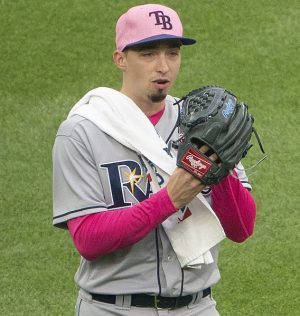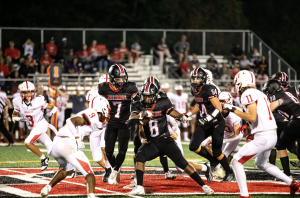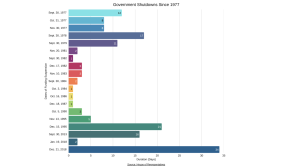The Rays’ Reliever Revolution
November 8, 2018
Even before a pitch was thrown in spring training, it was already decided that the Boston Red Sox and New York Yankees would make the playoffs. Both the Red Sox and Yankees had made the playoffs in 2017 and acquired MVP-caliber players (JD Martinez and Giancarlo Stanton, respectively) in the offseason. With the two powerhouses in the same division, it was expected that every other team in the AL East were to have “rebuilding” seasons.
The Baltimore Orioles, despite spending over seventy million dollars on improving their pitching staff, finished the season with a franchise high 115 losses. The Blue Jays also disappointed going 73-89. But the Tampa Bay Rays were a different story.
After finishing 80-82 in 2017, the Rays lost five of their six top players during the offseason (Steven Souza, Logan Morrison, Evan Longoria, Corey Dickerson, and Alex Cobb) and only spent six and a half million dollars in replacing them. They were projected to be somewhere between mediocre and horrible.
After starting the season 4-13, the Rays caught fire. The Rays finished 90-72 and even had the most wins in the MLB for the last two months of the season (36-19). Much of the team’s success could be attributed to Blake Snell. The 25-year-old led the league in wins, ERA, and is widely considered the front-runner in the AL Cy Young award race.

But perhaps the people who deserved the most credit for the Rays’ success were the ones off the field. The Rays’ analytics department developed a revolutionary strategy designed to help make up for the weak back end of their rotation. Rather than trying to get a subpar pitcher to stretch for five innings, they would have a “bullpen day”.
Contrary to what most skeptics thought, the plan was not to pitch nine pitchers for one inning each, but rather switch the role of the “traditional starter” and the second pitcher. Instead of the first pitcher throwing around five innings and following him up with one inning relievers, a reliever by trade would pitch the first inning and the second pitcher would throw around five.
It was quite effective for them as they had a winning percentage of .565 (35-27) in games they used this strategy. Considering this was their alternative to hoping some minor leaguer could pass as a major leaguer, it was quite an impressive showing for “the opener”.
But why does it matter? If they are going to throw the same number of innings anyway, why throw them in an unconventional order? The reasoning revolves around batting order revolutions. As shown below, hitters do better the second and third times they face a starting pitcher within a game.
| Time Facing SP | BA | OBP | SLG | OPS |
| First | .237 | .304 | .392 | .695 |
| Second | .252 | .318 | .416 | .734 |
| Third | .267 | .332 | .457 | .789 |
By having a reliever by trade pitch the first inning, the starter by trade does not have to face the top of the order a third time; if he pitches well enough to get through the order twice, he is most likely going to be facing the bottom of the order. This concept of trying to prevent third-time matchups is the fundamental basis of the opener strategy, but it holds some other added benefits as well.
One such benefit is that it makes scouting more difficult for the opposing team. The MLB requires that each team indicate their starting pitcher long before the game begins, allowing batters to scout the upcoming pitcher the day before. By utilizing the opener strategy, the team is showing their cards for one inning, not five.

It is also worth considering how teams try to use their bullpens. Most teams have around three relievers they would like to use as frequently as possible, but try to save their innings for higher leverage scenarios. If these pitchers go an extended period of time without usage, managers will decide to use them in a game, regardless of leverage, to make sure they do not get rusty. Rather than waiting for later in the game and hoping the leverage is high, the manager could instead start with that reliever. This would ensure that the valuable innings of the team’s best relievers would never be spent on games of which the outcome was already determined.
In terms of future implementation, this would not be an everyday strategy. There will always be the Max Scherzer’s and Chris Sales of the world; you just hand them the ball and watch them go. But for teams like the Rays, it stands as a potential solution for a lack of starting rotation depth. The playoffs have seen both the Brewers and Athletics, two teams criticized for not having a “true ace pitcher”, use the opener strategy.








